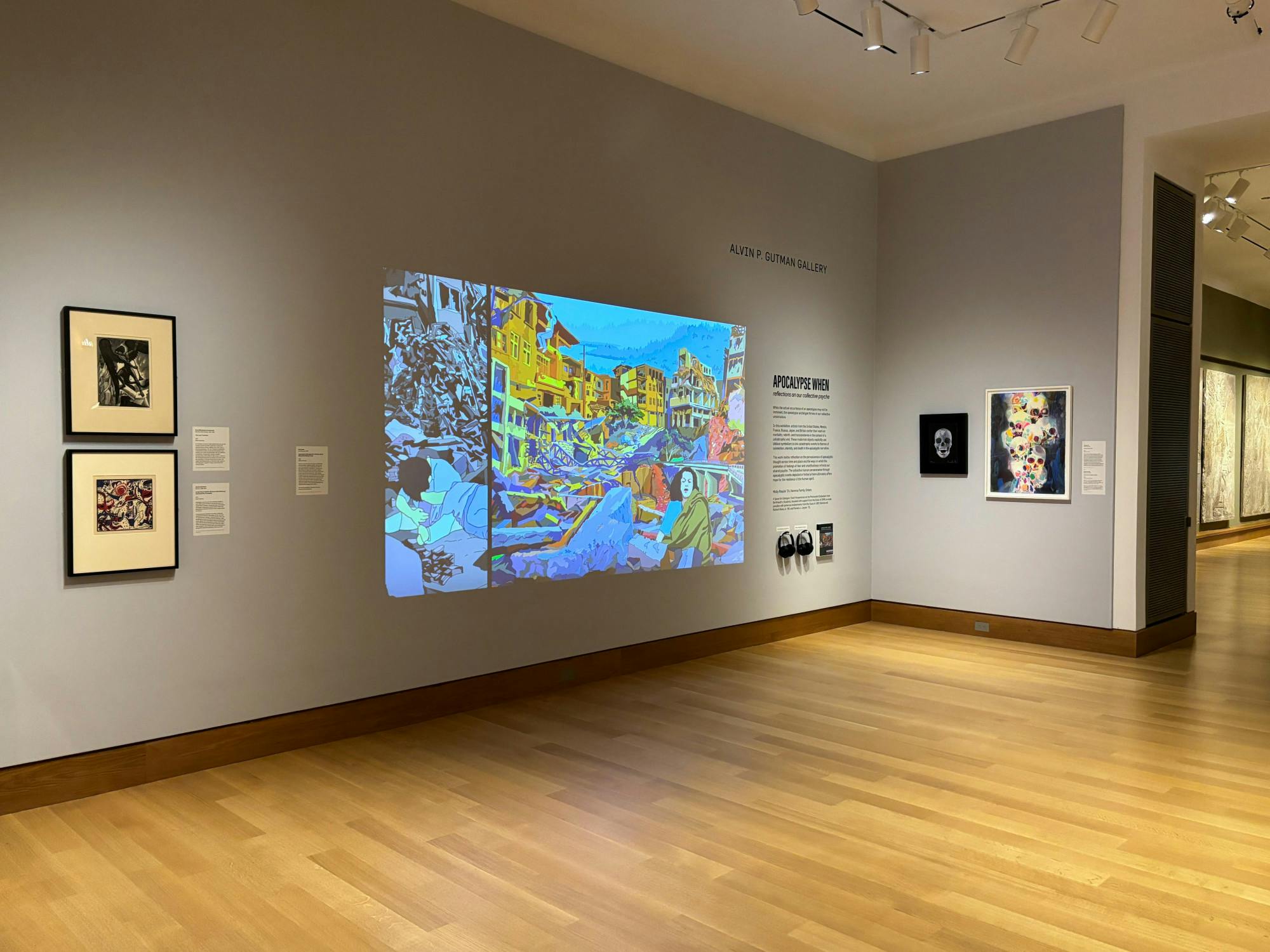Growing up in an artistic family has meant that Molly Rouzie ’24 has always been immersed in creative endeavors, embarking on her own artistic studies around her sophomore year of high school. At Dartmouth, Rouzie is a studio art and Italian double major with a minor in art history. At the beginning of this school year, she also became a campus engagement intern at the Hood Museum of Art under the guidance of curator of academic programming Amelia Kahl ’01.
In her internship role, Rouzie has curated the Hood Museum’s 116th “A Space for Dialogue” exhibition. This program invites student interns to diversify interpretations of the Hood’s permanent collection through a topic of their choice. Rouzie’s exhibit, titled “Apocalypse When: Reflections on our Collective Psyche,” takes a psychological approach to the concept of the apocalypse throughout art history, and will debut on Jan. 12.
The centerpiece of Rouzie’s exhibition is Chris Doyle’s 2009 artwork “Apocalypse Management (Telling About Being One Being Living).” This animation is projected for a little over five minutes, depicting the post-apocalyptic aftermath and recovery from mass destruction. Despite the initial horror and eeriness of this apocalyptic narrative, Rouzie aims to convey a message of hope and optimism through the characters’ ability to transcend the struggle, demonstrating their resilience. Like Doyle’s animation, many of the works featured in this exhibition are modern and contemporary interpretations of the apocalypse, ranging from prints from the 20th century to various digital installments.
Rouzie said she decided to explore the apocalypse because this theme stood out to her as she examined the Hood’s art collection. When discussing how she chose the pieces for the final exhibition, she pointed to her background in studio art as how she initially judged pieces and later brought in her knowledge of art history.
“The process of choosing the works was definitely more visual,” Rouzie explained. “... I went for ‘what do I like?’ and then, ‘how does that work together?’ So I started with the studio art approach, then came in the backend with the art history.”
Rouzie was further drawn to apocalyptic themes because of the extensive amounts of artwork that address the topic over time and the cultural and religious variations in doomsday beliefs.
“This theme continues for such a long period of time and spans more than just the biblical apocalypse,” Rouzie said. “There are so many different versions of the apocalypse in different cultures … and it was interesting how artists incorporate the same ideas throughout time.”
The vastness of the Hood Museum’s collection of apocalyptic artwork extends far beyond those featured in Rouzie’s exhibition, spanning from the 1500s to modern day. This prevalence of the apocalypse in art history required Rouzie to immerse herself in research to successfully craft her exhibition.
“I knew nothing about the apocalypse before I started the show, so I did a lot of religious reading about it, but also art-based reading. It was scary going into it because it was very outside of my comfort zone … but it all came together,” Rouzie said.
Despite the daunting topic of an apocalyptic world, Rouzie aims for the audience to walk away from the exhibition with an optimistic perspective. The intention is to convey that what appears to be the end of time is not truly “the end.” According to Rouzie, the exhibition’s purpose is to illustrate that the apocalypse is not a final chapter but rather a temporary obstacle that can be overcome, ultimately paving the way for progress. When faced with hardship, people tend not to fold under the pressure but rather adapt.
“The apocalypse is an archetype that’s something that’s innate in all of us … so I think it’s important that when we look at these works, we see what the artist is showing, which is not ‘this is the end,’ even if they may think it’s the end,” Rouzie explained. “It’s a time for hope, and what we can come out of these events with, and how we can grow from the experiences that we have.”
Rouzie added that she was pleasantly surprised by the level of liberty she had in curating her exhibition, which made it a highly rewarding experience for her.
“[It was] surprising how much autonomy I had over this project,” she said. “My supervisor definitely helped an incredible amount, but I had full control over the idea, the research, the layout, the execution — so I was really the lead curator for it, which was incredible to have that opportunity as an undergrad.”




